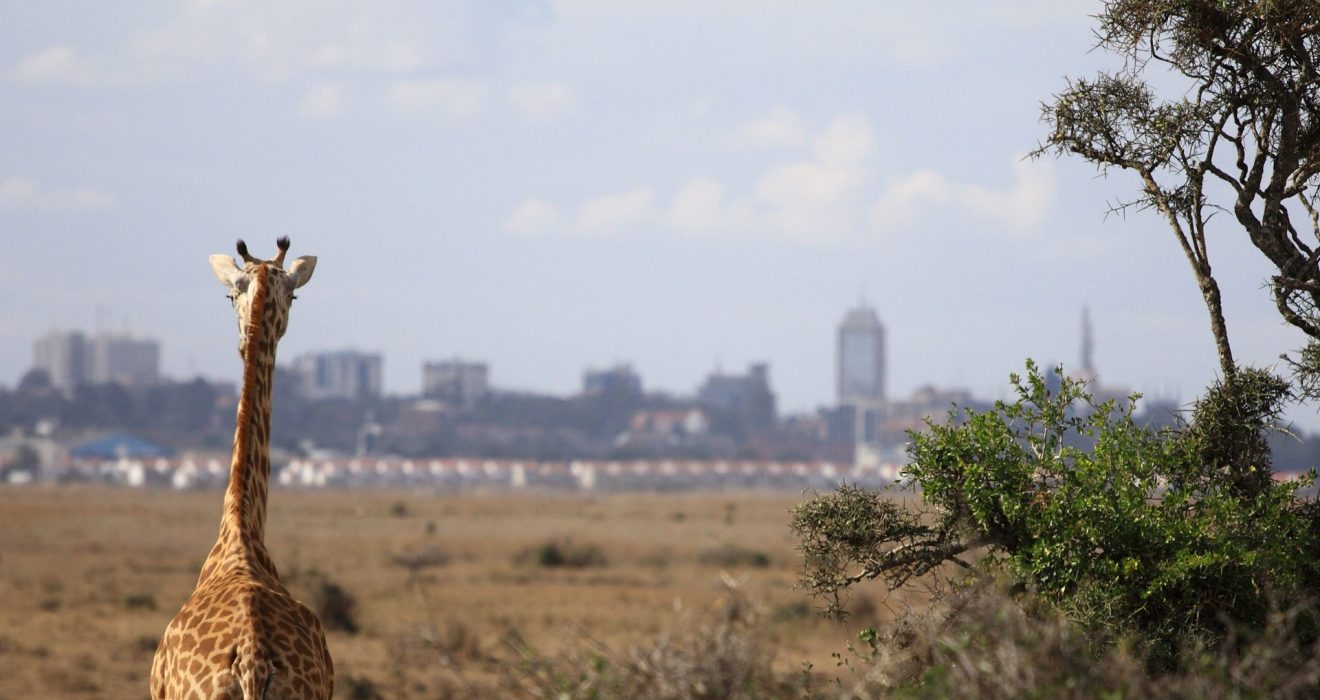Nairobi, Kenya, a vibrant metropolis renowned as the “Green City in the Sun,” boasts a unique distinction — it is home to Nairobi National Park, an expansive wildlife reserve nestled just outside the city center. Covering 117 square kilometers, this urban oasis stands as the sole national park globally integrated within a capital. A haven for diverse wildlife, from majestic lions and rhinos to graceful giraffes, the park represents an unparalleled coexistence of urban life and untamed nature.
Despite its significance, Nairobi National Park faces an array of challenges threatening its delicate ecological balance. Pollution, human-wildlife conflicts, ongoing infrastructure developments, and the looming specter of poaching cast shadows over this vital sanctuary. As the city expands, the clash between urban expansion and wildlife preservation intensifies, prompting critical questions about the future of this exceptional urban-nature intersection.
Kenya’s Unique Urban Oasis
Nairobi, Kenya’s capital, stands as the “Green City in the Sun,” boasting a pleasant climate and lush green spaces. Remarkably, it houses Nairobi National Park, spanning 117 square kilometres, making it the world’s only capital with an integrated national park. The park is a biodiversity haven, home to lions, rhinos, giraffes, buffalos, and diverse antelope species. Amid the urban hustle, this expansive sanctuary encapsulates the harmonious coexistence of city life and untamed nature, a testament to Kenya’s commitment to preserving its natural heritage.
As the city evolves, so do the challenges facing Nairobi National Park. Pollution, human-wildlife conflicts, infrastructure expansion, and the persistent threat of poaching cast shadows over this unique urban wilderness. The juxtaposition of urban development and wildlife conservation raises pressing questions about sustainable growth and the delicate balance required to safeguard this exceptional intersection of urban and natural landscapes. In navigating these challenges, Nairobi sets an example for the world in redefining the relationship between cities and the wild, fostering a harmonious cohabitation that echoes beyond its borders.
Pollution, Conflict, and Development
Despite its natural wealth, Nairobi National Park faces multifaceted threats. Pollution, human-wildlife conflicts, ongoing infrastructure development, and the persistent menace of poaching jeopardize the delicate balance of this urban wildlife sanctuary. As the city expands, the park contends with encroaching human habitats, leading to increased conflicts between wildlife and urban dwellers.
Pollution, both air and noise, infiltrates the once-pristine air of the park, impacting the well-being of its inhabitants. The expanding human footprint brings about a clash of territories, forcing animals to navigate through a rapidly changing landscape. The existing railway line and proposed infrastructural projects further fragment the park, posing challenges to the free movement of wildlife.
Additionally, the specter of poaching casts a shadow over the park’s iconic species, necessitating heightened conservation efforts. Amidst these threats, the park stands as a battleground where the forces of urban development and wildlife preservation intersect, prompting critical reflections on sustainable practices and the future of Nairobi’s unique urban oasis.
Fencing and Genetic Isolation
Conservationists grapple with the challenge of preserving the park’s ecological integrity. Suggestions to fence Nairobi National Park have emerged, prompting debates within the conservation community. Critics argue that fencing risks transforming the park into a confined space, disrupting natural game movements and hindering genetic diversity crucial for species survival.
The Park’s Environmental Contributions
Nairobi National Park, nestled at an altitude of 1,795 metres, benefits the city in various ways. Its green environment complements Kenya’s largely green energy grid, primarily sourced from hydro and geothermal power. The park’s sunny climate presents an opportunity to harness natural light for powering city buildings, aligning with sustainable energy practices.
Mitigating Environmental Impact
Beyond its wildlife significance, the park serves as an urban oasis mitigating environmental impacts. The unpolluted air within the park’s vicinity contrasts with the bustling city, offering residents a serene escape. Research indicates that mature trees in the park contribute to reducing “heat islands,” especially crucial in alleviating heat-related challenges in nearby impoverished neighborhoods.
The Future of Nairobi National Park
The challenges faced by Nairobi National Park underscore the urgent need for a balanced approach to conservation and urban development. As the city expands, finding sustainable solutions to protect wildlife habitats, manage human-wildlife interactions, and uphold the park’s ecological health becomes paramount. Nairobi’s unique urban oasis stands at a crossroads, emphasizing the delicate dance between preserving biodiversity and catering to the city’s growing needs.
Conclusion
In the heart of Nairobi, the struggles and triumphs of Nairobi National Park encapsulate the broader global narrative of balancing urban development with environmental conservation. The park’s role as an urban refuge, a biodiversity hotspot, and a symbol of coexistence underscores the delicate dance required for sustainable progress. As the city’s footprint expands, the challenges magnify, demanding innovative solutions to ensure the survival of this extraordinary urban sanctuary. Nairobi National Park stands at the crossroads of conservation and development, presenting an opportunity for thoughtful, adaptive strategies that harmonize the needs of a growing city with the imperative to protect and preserve the natural world within its boundaries.

